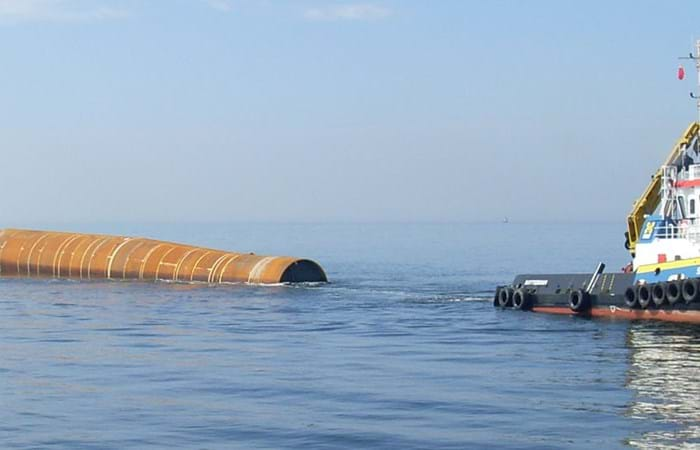Windfarm construction projects regularly feature in the work programmes of SMIT’s sheerlegs fleet. For example, the Taklift 7 was involved in the Walney Offshore Windfarm development in the Irish Sea. Walney Offshore is a wind farm project developed by DONG in the Irish Sea, some 20 miles from the coast at Barrow.
The first half of the development, Walney 1, became fully operational in 2011. SMIT’s scope of work involved the installation of a series of 51 large monopiles for Walney 1. The 1,200 tonnes lift capacity sheerlegs Taklift 7 was mobilized for the project, together with the multipurpose vessel Smit Buffalo, which provided support services. The main task was to upend the monopiles and hand over the structures to a jack-up installation platform. The monopiles were transported to Barrow by a coastal vessel, having been loaded in Poland. A shore crane discharged the monopiles as they arrived, they were then plugged and towed out to the windfarm installation site. Taklift 7 would then connect and bring each pile into the vertical position, ready for installation by the jack-up Goliath. Each pile had a length of 58 metres and a weight of around 600 tonnes during upending. This project involved around five months of work and was successfully completed in September 2010.
